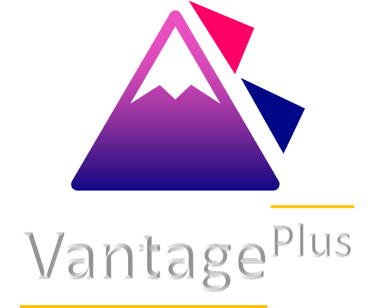
Digital Transformation: Implementation Strategy
Dive into the realm of digital transformation and explore the intricacies of implementing an effective strategy through our insightful blog. Discover the essential steps and best practices for successfully navigating the digital landscape, from conducting thorough assessments and setting clear objectives to selecting and implementing the right technologies,
Waqar Jadoon - CEO Vantage Plus
6/22/2023
Digital Transformation: Implementation Strategy
The successful implementation of a digital transformation in an organization requires a systematic and well-planned approach acceptable to all stakeholders. Following key process steps form a viable strategy to facilitate the implementation:
Define Clear Objectives:
Start by defining clear objectives for the digital transformation strategy. Identify the areas of the organization that need to be transformed and articulate the desired outcomes. These objectives should align with the organization's overall vision, mission, and strategic goals.
Assess Current State:
Conduct a thorough assessment of the organization's current digital capabilities, processes, and infrastructure. Identify the gaps and areas for improvement. This assessment will provide a baseline understanding of the organization's digital maturity and help in defining the roadmap for transformation.
Develop a Transformation Roadmap:
Based on the objectives and assessment, develop a detailed transformation roadmap. Break down the transformation journey into smaller, manageable phases or projects. Define key milestones, timelines, and resource requirements for each phase. Prioritize initiatives based on their impact and feasibility.
Foster Leadership Buy-in:
Digital transformation requires strong leadership buy-in and support. Engage senior leaders and stakeholders from the outset. Clearly communicate the benefits of digital transformation, address any concerns or resistance, and secure their commitment to drive the transformation initiative forward.
Build Cross-functional Teams:
Form cross-functional teams with representatives from different departments or business units. These teams will be responsible for driving the digital transformation initiatives, ensuring collaboration, and facilitating effective communication throughout the process.
Invest in Talent and Skills:
Evaluate the organization's talent pool and identify any skills gaps related to digital technologies and processes. Invest in training and upskilling programs to equip employees with the necessary knowledge and skills to support the transformation. Consider hiring external talent or partnering with digital experts if required.
Embrace Agile Methodologies:
Adopt agile methodologies, such as Agile or Scrum, to enable iterative and incremental progress in the digital transformation journey. Break down larger initiatives into smaller, manageable sprints or iterations. This allows for quicker feedback, course corrections, and ensures alignment with evolving business needs.
Implement Pilot Projects:
Start with pilot projects to test and validate digital solutions or processes on a smaller scale. This approach allows for learning, refinement, and identification of any challenges before scaling up. Gather feedback and insights from pilot projects to inform the larger transformation initiatives.
Enable Change Management:
Digital transformation involves significant organizational change. Develop a change management strategy to support employees in embracing the new ways of working. Communicate the benefits, provide training and support, and address any resistance or concerns. Foster a culture of continuous learning and adaptability.
Monitor, Evaluate, and Adjust:
Establish metrics and key performance indicators (KPIs) to measure the progress and impact of the digital transformation initiatives. Continuously monitor and evaluate the outcomes against the defined objectives. Regularly review the transformation roadmap and adjust as needed based on feedback, market dynamics, and emerging technologies.
Foster Collaboration and Partnerships:
Explore collaboration opportunities with technology partners, vendors, and industry peers. Leverage external expertise and resources to accelerate the digital transformation journey. Engage in industry forums, conferences, and networks to stay updated on the latest trends and best practices.
Continuously Innovate:
Digital transformation is an ongoing process. Encourage a culture of innovation and continuous improvement. Foster an environment where employees are encouraged to experiment, take calculated risks, and explore new technologies and approaches. Stay updated with emerging technologies and market trends to drive innovation and maintain a competitive edge.
By following these processes, organizations can navigate the digital transformation journey effectively and achieve successful outcomes. It requires a holistic approach, focusing on people, processes, technology, and culture to drive meaningful change and secure long-term success in the digital era.
Vantage Plus Analytics
Empowering businesses with AI-powered analytics and digital transformation solutions for data-driven success.
Services
Data Analytics
AI & Automation
Blockchain Solutions
Industry Analytics
